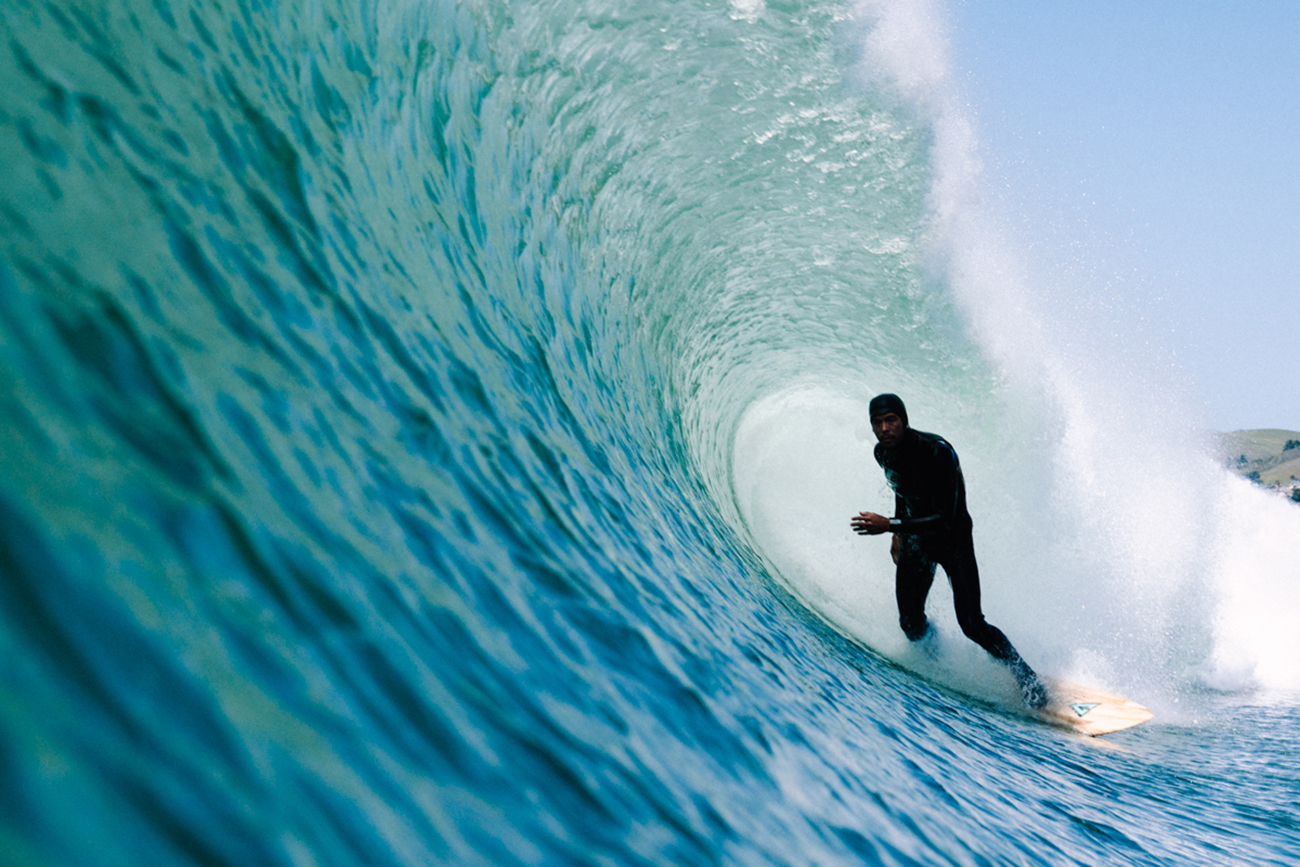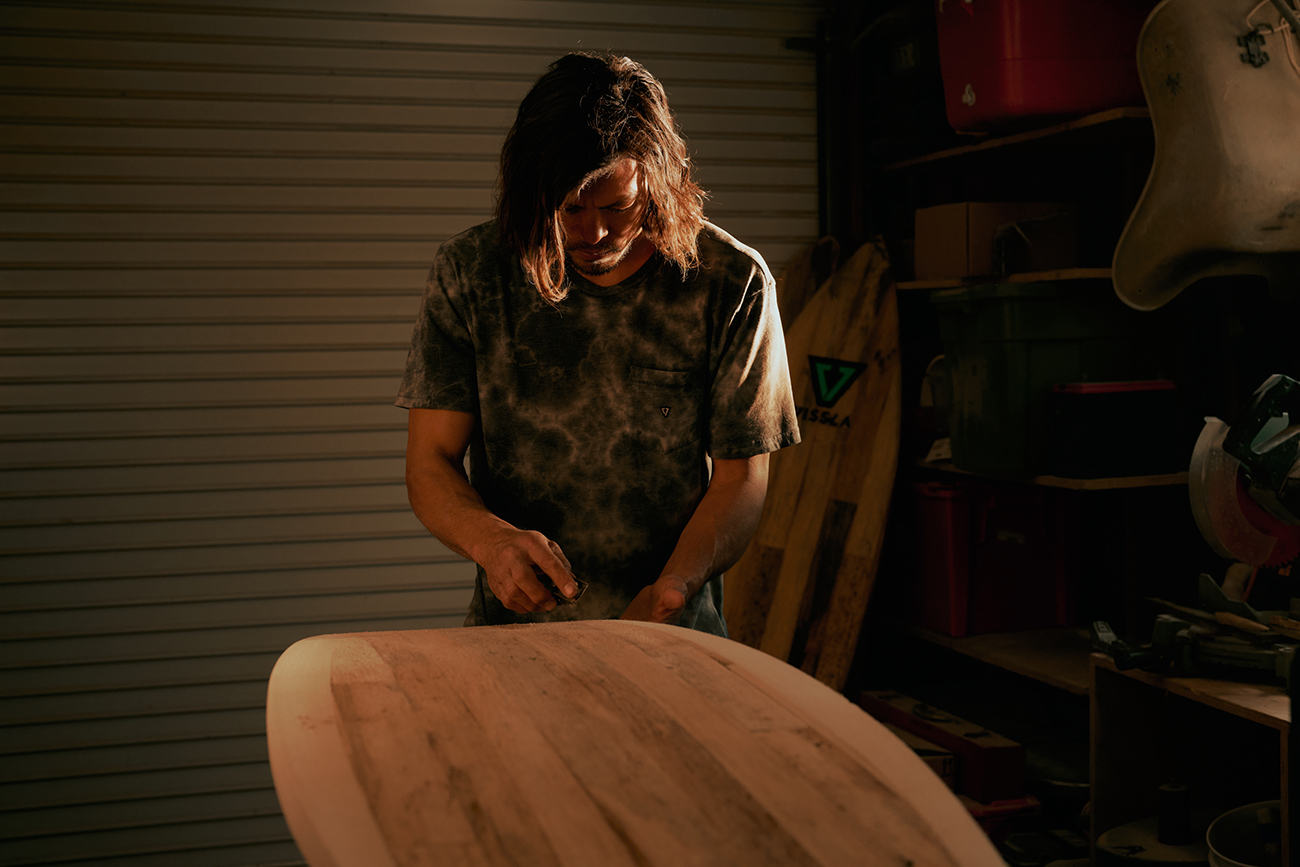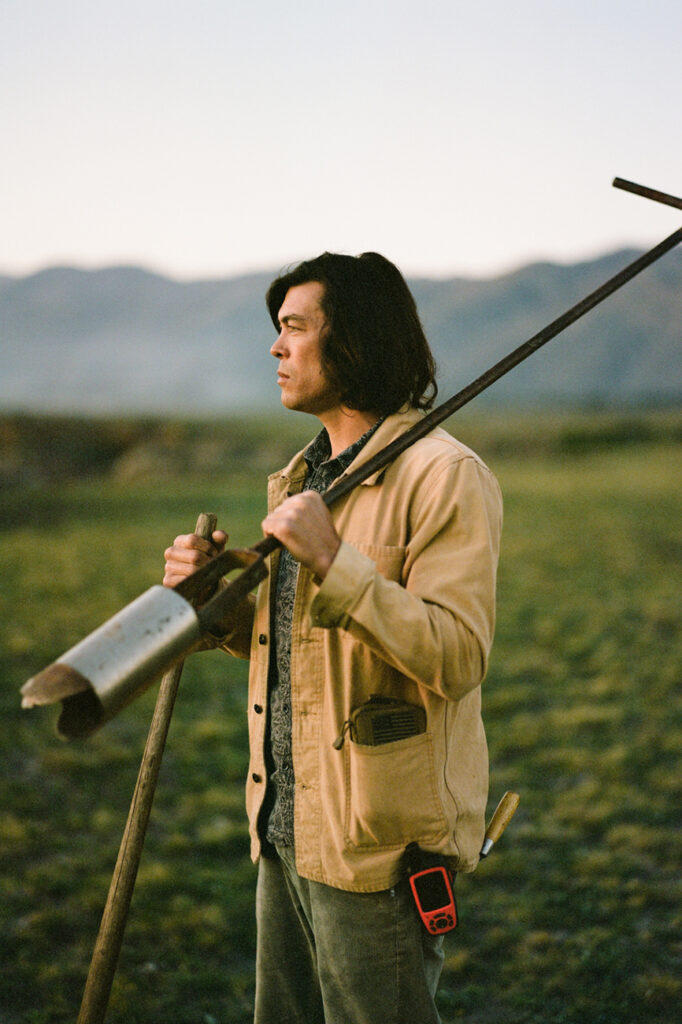
Chad Jackson has never shied away from an adventure. He’s been a Cal Poly student studying at the intersection of science and culture. He’s been a professional surfer and surfboard maker. He’s been an environmental consultant, a historian and a geologist. All those steps on his journey have led him to where he is today: a professional archaeologist working to protect California’s natural and cultural resources in the face of a changing environment and a developing world.
A native of Cayucos in San Luis Obispo County, Jackson grew up as self-described whiz kid in science and math with dreams of working at NASA, while also falling in love with surfing on the Central Coast. By the time he started in the electrical engineering program at Cal Poly, he was already a “hardcore, full-time surfer,” professionally sponsored by the Lost surf brand.
Jackson didn’t choose to study engineering solely because he loved the technical challenge of solving complex scientific and engineering questions. He was drawn to STEM disciplines in part because he appreciated the cultural impact of scientific inquiry.
“There’s something about the legacy of human ingenuity with math and science — how far some of it goes back and how far we’ve come and just to be able to go through that entire curriculum of what humans have accomplished,” he says.
But the further along he got in electrical engineering, the more he realized that engineering wasn’t the right fit. As he pondered the next steps of his educational journey, he took a break from school in 2001 to focus on his career as a professional surfer.
After a few years of traveling the world on sponsored tours and competing in big wave surf tournaments, Jackson returned to Cal Poly and his studies. This time, he chose a program that more closely infused his passion for cultural and social exploration with science: earth sciences (now known as environmental earth and soil sciences). He studied geology, environmental science and geographic information systems (GIS) and worked on cross-disciplinary projects with anthropology professor and field archaeologist Terry Jones.
“Archaeology requires an unusual combination of skills,” says Jones. “You have to have book smarts, but you also have to have sort of common sense — excavations are a lot like construction projects, really. Chad really mastered both of those things early on.”
At the end of 2004, just around the time Jackson returned to Cal Poly, a cataclysm hit the surf industry: The supplier of 90% of America’s surfboard blanks abruptly shut down after the EPA flagged a toxic chemical in surfboard foam, and the polystyrene cores that were the industry standard suddenly became globally unavailable. The ensuing chaos set off a lightbulb for Jackson.

Jackson in his surfboard workshop, shaping a board made from agave planks.
“It was during that time that I thought, ‘If there’s any community that should be concerned with protecting the oceans and using clean materials, it’s surfers,’” he says. “That’s when I just really took off and started to experiment with different materials.”
Jackson had long been making boards to suit his own niche needs as a big-wave surfer and had begun making custom boards for friends. He began rethinking every aspect of his boards, from the petroleum-based foam cores to the fiberglass cloth and petroleum-based resin that form the board’s rigid surfaces. Was there another, more environmentally-friendly way to construct them?
He came up with a distinctly local solution: agave.
The agave plant, famous for its connection to tequila production, has been central to Indigenous cultures in California, the American Southwest and Northern Mexico for centuries. The fibers of the agave plant are light and buoyant, and with some careful shaping, can make perfect surfboard cores.
If there’s any community that should be concerned with protecting the oceans, it’s surfers.
For nearly 20 years now, Jackson has been making custom boards out of agave, flax and hemp cloth, and plant matter-based resin. He’s developed more efficient building techniques to reduce material waste, and his signature surfboards are about as sustainable as they can be.
After school, Jackson decided to branch out of the surfing world and into environmental consulting in California and Hawaii, helping developers keep housing and infrastructure projects in line with regulations that protect environmental and cultural resources.
This work, which Jackson began in light of the 2008 economic downturn, marked his first venture into professional archaeology. A major part of his work involved taking an inventory of both the ecosystem and any important historical artifacts that might be hidden in locations being considered for construction projects.

Jackson on the job as an archaeologist.
On projects he’s worked on, there’s often a range of possible solutions to facilitate important development while protecting resources. That might include rerouting a proposed road to avoid disturbing a centuries-old Chumash rock painting; adjusting the timeline on a residential development to let nesting birds finish their breeding cycle; or excavating and inventorying artifacts from a Gold Rush-era ranch before breaking ground on an energy facility.
“The work involves everything — going out and surveying the area, working with construction, moving critters out of the way, documenting sensitive habitats, working with Native American tribes and protecting cultural sites,” he says. “We have a better understanding now of how we affect the environment and how to apply our knowledge and technology to doing things better, so you can still build the house or road you need to build, but you can do it intelligently.”
He says that for the most part, developers wanted to responsibly balance the needs of the project with the duty to minimize harm to the environment.
“We’re in California, in a place where there’s so much natural beauty, biodiversity and cultural history,” he says. “Most people involved in this work here have a pretty solid conscience. They may get frustrated with the regulations, but most people want to do things the right way.”
The experience helped Jackson develop a broad set of skills in communication, documentation, planning and project management — which still serve him well in his current position as lead archaeologist for the Central Coast region of California State Parks. His work centers on uncovering physical clues that expand the story of California’s human past, from 19th-century settler communities to thousands of years of Indigenous history in the region.
We have a better understanding now of how we affect the environment and how to apply our knowledge and technology to doing things better.
Jackson, who is part native Hawaiian, has a deep passion for shedding light on Indigenous culture and knowledge. He’s especially interested in learning more about how the Chumash people adapted to thousands of years of geologic change along the Central Coast. It’s an important lesson for modern Californians as human interaction and a growing population accelerates the pace of coastal erosion — a drastic change Jackson has seen firsthand in his time as both a surfer and scientist.
“We’ve built all of our modern infrastructure based on the idea that everything is static,” he says. “We exist in a snapshot of time and assume that that snapshot is the permanent status. But through archaeology we can observe how people who came before us adapted to changes and use that knowledge as a model for how we can be similarly flexible and adaptable today.”
For Jackson, every opportunity to learn a lesson or preserve a legacy from the past is a worthwhile gift to pass on to future generations. “Our shared humanity — all the beautiful art and storytelling and science — there’s just so much rich human culture and that’s what drives me,” says Jackson. “Applying technology and science to solve problems and answer questions that are unknown is very satisfying.”


